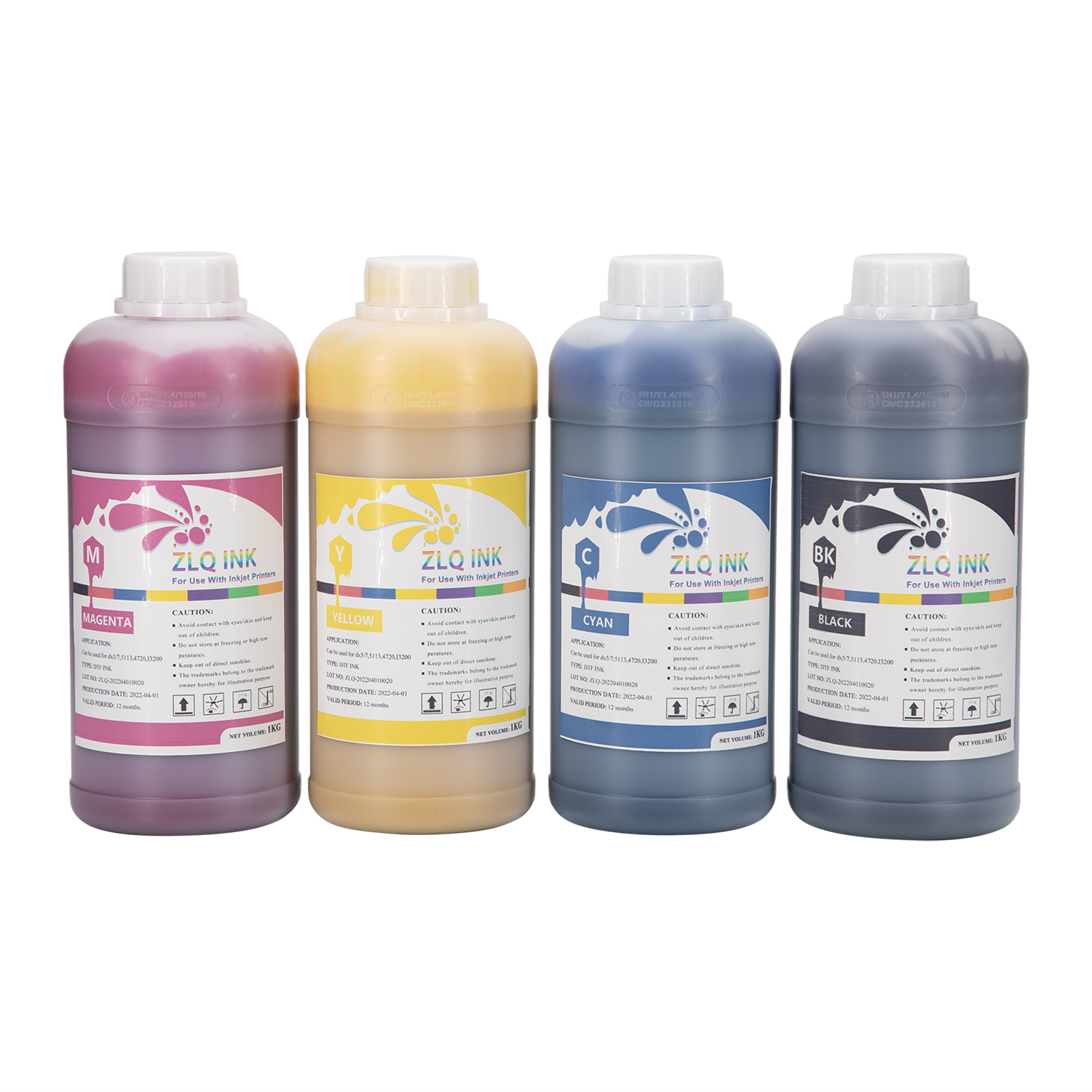
1. Appearance characteristics
1. Color: High-quality DTF ink should be bright and pure, without obvious color difference. You can compare the printed sample with the standard color to observe the color accuracy and saturation. For example, when printing a colorful picture, the picture printed by high-quality ink is bright and the transition is natural, while the inferior ink may have problems such as dull color and color cast.
2. Transparency: If the ink has high transparency, it means that it has few impurities. You can observe the transparency of the ink through light, or drop the ink on a transparent material to observe its penetration and diffusion. Generally speaking, ink with high transparency will not affect the base color when printing, and can show better results.
3. Fluidity: Moderate fluidity can ensure that the ink is ejected smoothly from the nozzle during printing without clogging. You can shake the ink gently to observe its flow. If the ink is too viscous, it may cause uneven printing; if it is too thin, it may affect the printing quality.
2. Printing effect
1. Color reproduction: High-quality ink can accurately restore the color of the image, and the printed image is highly consistent with the original design in color, tone and saturation. Color reproduction can be evaluated by comparing the printed sample with the original image, or by using professional color measurement tools. For example, when printing a photo with complex colors, high-quality ink can clearly present every detail and color level.
2. Clarity: High-quality ink can print clear and sharp images, with neat lines and text edges, without blur or jaggedness. Observe the printed small text and complex patterns to see if they are clear and legible. If the ink quality is not good, the printed image may be blurred and affect the visual effect.
3. Adhesion: Good DTF ink has good adhesion on various printing materials and is not easy to fall off. The adhesion of the ink can be tested by rubbing, scratching or washing. For example, gently scratch the printed surface with your fingernail, and high-quality ink will not be easily scraped off; soak the printed sample in water for a period of time to observe whether there is fading or falling off.
4. Lightfastness: Inks with good lightfastness are not easy to fade when exposed to sunlight or strong light for a long time. You can expose the printed sample to the sun for a period of time and then observe its color changes. If the ink has poor lightfastness, it may fade significantly in a short period of time, affecting the service life of the printed product.
III. Stability
1. Storage stability: High-quality DTF ink should remain stable during storage, without stratification, precipitation, crystallization, etc. You can observe the state of the ink after storage for a period of time, or test it according to the storage conditions in the product manual. If there is a problem with the ink during storage, it may affect its use effect and even damage the printing equipment.
2. Printing stability: During continuous printing, the performance of the ink should remain stable, without color changes, nozzle clogging, etc. You can perform long-term continuous printing tests to observe the performance of the ink. If the printing stability of the ink is poor, it may cause frequent downtime maintenance and affect production efficiency.
IV. Environmental protection
1. Hazardous substance content: High-quality DTF ink should meet environmental protection standards and have a low content of harmful substances. You can check the environmental certification mark or test report of the product to understand the environmental performance of the ink. For example, some environmentally friendly inks do not contain harmful solvents and heavy metals, which are safer for the human body and the environment.
2. Odor: Low-odor or odorless inks are usually more environmentally friendly. When opening the ink bottle, you can smell the ink. If the ink has a pungent smell, it may contain more volatile organic compounds, which is not good for human health and the environment.
V. Brand and reputation
1. Brand awareness: Choosing DTF ink from a well-known brand is usually more guaranteed in quality. Well-known brands usually have a strict quality control system and good after-sales service, which can provide users with more reliable products. You can understand the reputation of different brands by consulting industry information, consulting professionals or referring to other users' evaluations.
2. User evaluation: Referencing other users' usage evaluations is also an important basis for judging the quality of ink. You can search for evaluations and usage experiences of related products on the Internet to understand other users' evaluations of ink color, printing effect, stability, etc. If most users have a high evaluation of a certain brand of ink, then the quality of the ink may be more reliable.